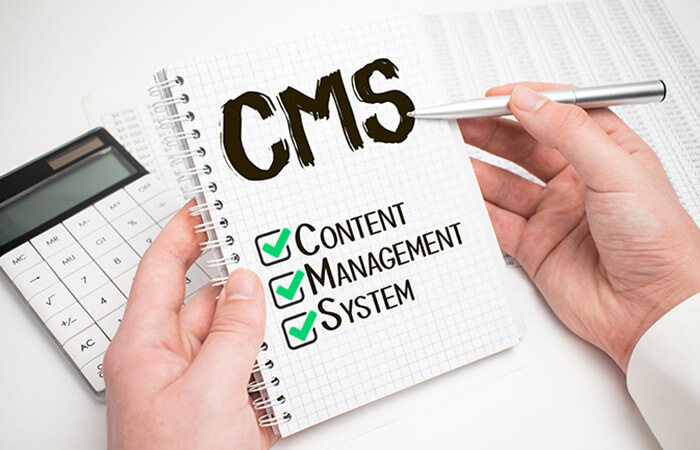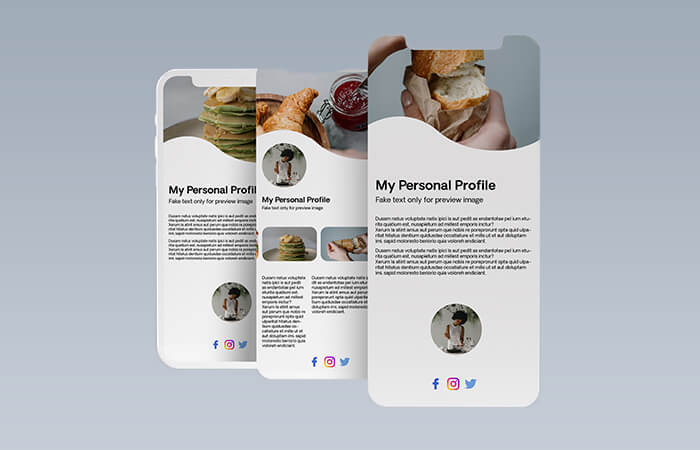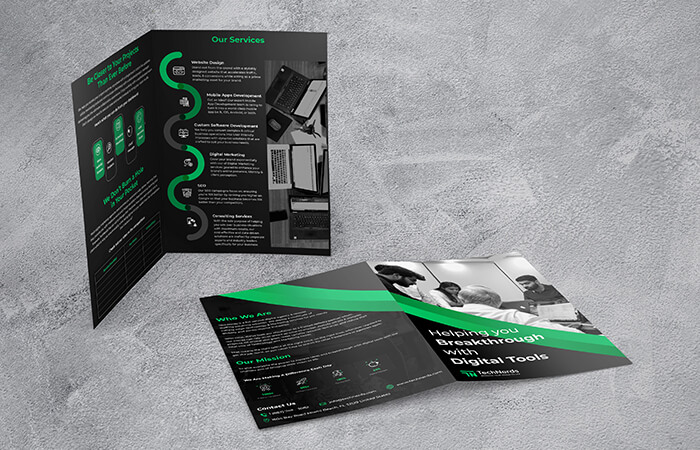A business website is your brand’s digital representation on the internet. It’s a virtual shop where consumers visit to interact with your products and services. But the grim reality is that over 97% of the websites fail in terms of providing a good user experience. This means that all the hopes and dreams you’re pinning on your business website may become dashed if you don’t invest in effective types of website design.
Therefore, it’s crucial to understand various types of website design that contribute to the overall impression and success of your business and ideas. We’ll also make a clear distinction between various types of website design, and all the important elements you need to use for assured online success.
In this article, we’ll help you strengthen your grip on the following:
Different Types of Website Design
A successful Web Design communicates a targeted message to website visitors while engaging the user. It is the first impression of your brand on the users therefore, it has to be eye-catching and effective to grab their attention.
It is possible to categorize different types of website design. So, the question is, which design is best suited to your business? Keep reading to find out about different types of website design and how they influence your business.
1. Static Page Website Design
A Static Page is a standard website design type. It enables you to build a website with set dimensions. It ensures that the design adheres to these predetermined dimensions, regardless of the device or browser.
Static web designs aren’t ideal to be viewed on mobile devices unless you create a separate mobile version of your site. In fact, over 6.648 billion people are using smartphones in 2022 which is 83% of the entire global population! So, it’s needless to say your website needs to be adaptable for mobile devices.
A lack of mobile friendliness will result in a poor user experience. This format doesn’t support mobile devices. As a result, unless you wish to create a mobile version of your website, static web design isn’t recommended.
The only main thing that makes it a viable choice for users is its easy setup format.
2. Adaptive Website Design
An Adaptive web Design uses CSS queries to detect the size of the browser and adjust the website according to it. An Adaptive Website allows the website layout to provide a decent user experience across different devices. However, unlike responsive web design, it’s easier to set up and takes lesser time to develop.
3. Liquid Website Design
A Liquid Website Design – also known as Fluid Design is a layout that uses flexible units rather than the fixed units used in a static layout. A Liquid Design page will fill the screen’s width regardless of the device it’s displayed on.
But, a significant downside is that it compresses all the information on a page. This makes it adapt to smaller devices, resulting in a poor user experience. However, it’s easier to set up than the responsive design, and no information gets cut off from the screen, as might be the case with static design.
4. Single Page Website Design
A single-page website or a one-pager consists of a single HTML page. It doesn’t have any menu bar that links to other pages on the website. Instead, it links to a single-page website and directs the user to different sections on that page.
This sort of web design is easy and simple to use. However, it’s not recommended if you’re planning to launch an e-commerce store. Such a design risks increasing your website’s bounce rate since it requires users to scroll too much.
One great example of a single-page website is 94 | Photography.
5. Dynamic Website Design
The Dynamic Website Design allows you to create a database of information & features. The core purpose is to design a website that serves different purposes and audience segments.
A key feature of the dynamic design is that it’s interactive and requires less coding expertise. However, it’s pretty complex to set up with different functionalities. Additionally, dynamic websites also tend to load slowly.
Blogs, e-commerce stores, and subscription-based websites are some examples of dynamic website design.
6. Responsive Website Design
Responsive website design is perhaps the most famous type of web design. They allow for multiple changes in appearance based on the size and orientation of the user device.
You first need to build your mobile layout before designing a responsive website. Once done, you then expose your website to desktops. Instead of trimming down to make it smaller, you can start small and build up.
Statistic reports that 54.4% of website traffic comes from mobile devices. Therefore, creating a responsive website that performs well on any device is highly recommended.
Adaptive Vs. Responsive Design
Responsive and adaptive designs are among the most in-demand types of website design. These two design approaches are employed when designing for a diverse range of screen sizes.
Adaptive websites differ from responsive ones in the following ways;
The Responsive design utilizes one layout. It adapts the content, navigation, and elements of the page to fit the user’s screen. It will reconfigure all the design elements used on a desktop, mobile, or tablet.
On the other hand, with Adaptive design, different layouts are created for different screen sizes. This design approach employs many sizes of a fixed design which is opposed to the fluidity of the Responsive design.
An adaptive design will cause the website to detect the user’s device type and adapt the template to fit that screen. This gives the designer control over the user experience.
Elements of a Successful Website
Before investing in your website, you need to know the essential components of a good website. These are discussed below;
1. Reliable Web Hosting Services
The web host offers server space, housing your files and enabling visitors to access your site. A dependable web host ensures swift services, maintenance, enhancements, positive customer experiences, support, and more, making it an ideal choice for those seeking cheap dedicated hosting solutions.
A host with a website builder can help you build your website in a few minutes. A reliable website host is a must-have for your website to run well.
2. Content Management System (CMS)

This works behind the scenes to organize parts like your site pages and meta-data. This makes navigation easier for your users. If you’re a coder, you can create your own CMS. However, you can use some famous CMS tools like WordPress and Shopify.
3. Basics of Search Engine Optimization (SEO)

A great website must be search engines’ favorite. Following SEO best practices enables you to rank higher on search engines.
A few of them include; figuring out what keywords visitors will use to find your site, and using those keywords in your meta-descriptions, meta-tags, site copy, and image names.
Other search engine optimization practices include technical aspects such as mobile-friendliness, faster page-load time, and creating backlinks.
Read More: How TechNerds SEO Can Help You Gain An Edge Over Your Competitors
4. Analytics Tools

Google Analytics is one of the most popular analytics tools. It lets you know how people find your site and which pages they spend the most time on.
An analytics tool is a meaningful way to measure how engaged users are with your website, making it an essential part of your website. Google Analytics, for example, integrates with WordPress, Shopify, and other CMS websites.
5. Inventory Management

When you use inventory management tools, you can track how many products are sold on your website. Additionally, they let you track what you’ve sold, what’s in stock, and what’s on order.
Inventory management tools are highly recommended if you own an e-commerce store.
6. Media

Images captivate the human eye. This includes GIFs, videos, etc. These are especially important when selling products/merchandise online.
Images make your website less boring and more engaging. They also help buyers to know what they want they’re buying. Moreover, the About Us section, for instance, should include images of you and your team.
**Not to forget that images must be optimized to load fast**
7. Shopping Cart and Payment Tools

If you own an e-commerce store, you will need a reliable and easy-to-use shopping cart and payment tool. Some payment tools that are common among online shoppers are PayPal and Square.
8. Social Media Integration

It’s also essential to link your social media account to the website. This will help you distribute your company’s latest updates across channels. Also, with minimum effort, you can repurpose your content for each social media channel.
9. Contact Information
This includes your email and phone number. It enables users to send feedback and report issues.
An ‘About Us’ section should also be included to give users information about you and your team. Again, this fosters trust between your brand and the user.
10. Mobile-Friendly Template

Your site needs to be adaptable to multiple screens: laptops, tablets, and especially smartphones. A mobile-optimized or responsive design is recommended for this purpose.
It allows for fast loading, easy navigation, and ease of reading. A mobile-friendly site is also essential for Search Engine Optimization.
How to Invest Successfully in Your Digital Identity

Your digital identity is a set of attributes related to your business or brand. They are the things that set you apart from the competition and help your customers to identify you.
The key benefit of a unique identity is that customers relate to and engage with your brand better. This is why it is important to create a unique brand identity.
Here are the ways you can create ideas for a stellar digital identity.
1. Branding
Business branding is the most significant aspect of your digital identity. It’s what pushes your business to the limelight. Also, it’s a definite way of identification for your customers.
Business branding consists of your theme, color scheme, and brand development. This includes any other unique style or quality that makes your brand stand out. Thus, investing in unique branding for your digital marketing endeavors is essential.
Therefore, branding is the first step to building a successful digital identity.
2. Creating the Message
Your brand’s message is an essential thing to consider when investing in your brand identity. It includes your core mission statement, benefits the customers stand to gain, and values that you uphold as a business.
This is important because it gives the customers an idea of who you’re, what you offer, and what you bring to the table. Therefore, it’s crucial to incorporate a vibrant and compelling brand message in your designs.
3. Identifying Your Ideal Customer Profile
Identifying your target audiences or prospective customers is crucial to generating leads and sales. They are the people who are most likely to buy from you. To do it effectively, you need to create ideal customer profiles.
Ideal customer profiles refer to people within your audience who are the best fit for your business and are highly likely to buy from you.
You can create an ideal customer profile in many ways:
- By compiling information about your target audience gathered through surveys.
- By researching what resonates with your target audience’s age group, gender, etc.
- All the information gathered can be compiled to represent your ideal customer.
- Crafting Ideas for different purpose-driven marketing campaigns
What distinguishes your business or brand from others is when you make a difference. Thus, when investing in your brand’s digital design, it’s essential to lay your foundation on new soil. This means you have to propose a different idea to make your brand stand out.
This idea should be different, but you must also use purpose-driven marketing campaigns on multiple channels. In short, marketing campaigns should be designed to achieve specific goals.
Among the core purposes of websites are:
- To build a reputation
- To generate leads
- Describing expertise
- Sales and aftercare
For instance, welcome campaigns should have an important goal to spread brand awareness and introduce your customers to your business. When a customer first signs up, the initial campaign they should receive is welcome. A welcome campaign includes a welcome address with information about your brand.
Moreover, it includes your mission, values, and the services that you offer. You can run campaigns on social media, via emails, or in professional networking communities.
4. Adopting Tools and Systems to run a Smooth Operation for Business Growth
Investing in modern tools and systems is key to running design operations smoothly. They are the fundamental tools to ensure a top-notch user experience on your website. One of such tools is Search.
This allows users to navigate through your website or app. Easy navigation on your website is a thumbs-up for a good user experience. It’s because your customers usually know what they want before opening your website.
Allowing them to search using keywords would save their time and energy. Additionally, it will increase how customers interact with your website and decrease the bounce rate. So, it’s critical to invest in tools and systems that make for a better user experience.
5. Experimenting with Different Campaigns and Industries
Experimenting with different campaigns across industries can be very useful in determining what works and what doesn’t. This allows you to study which channel sweeps in more traffic and which doesn’t. Once you find what works for you, you can begin bagging up a higher return on investment (ROI).
5. Creating and Sharing Company Profile and Services
A crucial part of your digital identity is your company’s profile and services. This should be written and sculpted for the users to relate to and understand. Your profile and services must be spelled out. This will enable users to know whether you offer the services they need.
6. Keep Evolving
Last but not least, you have to ensure that you keep developing and evolving. For example, you need to invest in new technologies or tools to make your website run smoother.
You need to invest in better ways to keep your customers delighted. Remember, evolution applies not only to your designs but also to you as a business.
Conclusion
The above elements are essential to designing and building a successful website. As mentioned above, before you proceed to invest in website design, you must know;
- The different types of website design
- The elements of a successful website
These will help you make an informed decision about what design to invest in. Plus, it will guide you in other investments to build a powerful website. However, it’s advisable to take the help of a web design agency that has years of experience in successful web design as it will help you avoid burning your cash.
Once you are onboard with TechNerds, we will provide you with a sophisticated team and a dedicated project manager who are available 24/7 to help bring your online business vision to life.
If you have an existing website that’s not having the impact you expect from it, get on a discovery call with our team. We’ll do a free website audit and guide you on how to redesign your website for maximum impact.
Do you agree with the elements listed above? Share your website design experiences with us in the comment section below!. Catch you on our next discovery call!


